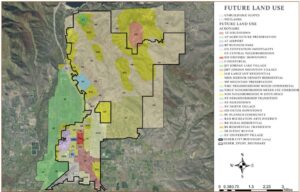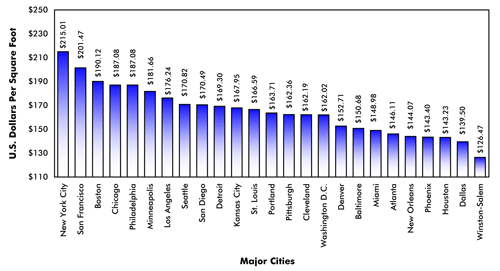Working with the City of Austin on Austin, TX, development projects presents unique challenges and opportunities for developers. Thus, to succeed in this dynamic environment, understanding the intricacies of the entitlements process, zoning regulations, and building code amendments is essential. Accordingly, here’s a comprehensive guide to the top ten things every developer should know.

1. Understanding the Entitlements Process
The entitlements process for Austin, TX, development projects is comprehensive and involves multiple steps. Developers must navigate zoning changes, site plan approvals, and building permits. The process can be lengthy, often taking several months or even years. Early engagement with the City’s Planning and Zoning Department is crucial to streamline approvals and avoid delays.
Example: A mixed-use development might require rezoning from residential to commercial. This involves public hearings and City Council approval.
2. Zoning Regulations and Overlays
Austin’s zoning regulations are detailed and specific. Zoning dictates the types of buildings allowed and their uses. Additionally, overlay districts impose further restrictions or provide additional opportunities, such as historic preservation or mixed-use development.
Reference: City of Austin Zoning Regulations.
3. Building Code Amendments
Next, Austin has unique building code amendments that often exceed state requirements. These amendments can increase construction costs but are designed to ensure safety and sustainability. Familiarize yourself with these local amendments to avoid unexpected expenses. Additionally, the City of Austin has specific accessibility requirements for residential development, including one and two family dwellings, that must be considered.
Example: The Austin Energy Code requires higher energy efficiency standards than the state code, impacting HVAC system designs.
Reference: Austin Building Code Amendments.
4. Environmental Considerations
Austin places a strong emphasis on environmental protection. Regulations related to water quality, tree preservation, and stormwater management are stringent. Accordingly, compliance with these regulations is critical for project approval.
Example: Developers must implement erosion and sedimentation controls to protect waterways during construction.
Reference: Environmental Criteria Manual.
5. Affordability and Density Bonuses
The City of Austin offers density bonuses in exchange for providing affordable housing units. Understanding these programs can help maximize the development potential of a property while contributing to the city’s affordable housing goals. The City also voted recently to reduce the minimum lot size to 1,800 sf to allow for more housing. In addition, the DB90 program for example allows for additional building height in exchange for more affordable units.
Example: A developer can receive additional floor area ratio (FAR) by including a percentage of affordable units in their project.
Reference: Austin Affordable Housing Density Bonus Program.
6. Transportation and Connectivity
Additionally, Austin’s comprehensive transportation plan affects development projects. Requirements for traffic impact analyses and connectivity improvements are common. Incorporating these elements early in the design phase can prevent costly redesigns later. Of note, the City of Austin voted to remove parking requirements last year, which will have sweeping effects to future development in the City.
Example: Large developments may need to include bike lanes or pedestrian pathways to comply with city standards.
Reference: Austin Transportation Criteria Manual.
7. Neighborhood Plans and Community Engagement
Neighborhood plans guide development in specific areas and reflect community priorities. As such, engaging with neighborhood associations and stakeholders early in the process can garner support and reduce opposition.
Example: A project in a neighborhood with a plan prioritizing green spaces might need to include parkland or open areas.
Reference: Austin Neighborhood Planning.
8. Historic Preservation
Austin values its historic landmarks and districts. Projects involving historic properties must adhere to preservation guidelines. This often requires additional reviews and can limit alterations to existing structures.
Example: Renovating a building in a historic district might necessitate using specific materials or designs to maintain historical integrity.
Reference: Historic Preservation Office.
9. Green Building Initiatives
Austin promotes green building practices through various programs and incentives. Participating in these initiatives can enhance a project’s sustainability and marketability while potentially reducing operating costs.
Example: The Austin Energy Green Building program offers ratings for commercial and residential buildings that meet specific sustainability criteria.
Reference: Austin Energy Green Building.
10. The Role of Experienced Architecture and Engineering Teams
An experienced architecture and engineering team is invaluable in navigating Austin’s complex regulatory environment. These professionals understand local codes and can design cost-effective solutions that meet regulatory requirements.
Example: A knowledgeable team can propose innovative stormwater management solutions that comply with environmental regulations while minimizing costs.
Conclusion
Working on Austin, TX development projects, requires a deep understanding of the city’s regulations and processes. By familiarizing yourself with the entitlements process, zoning regulations, building code amendments, and other key factors, you can navigate the challenges and capitalize on the opportunities. Engaging with experienced professionals and the community early in the process will help ensure a successful development project in this vibrant city. By following these guidelines, developers can effectively manage the complexities of working in Austin and contribute to the city’s growth and sustainability. Reach out to our team of experts in EVstudio’s Austin office – we would love to help you navigate the Austin process for your next project.
For more information, visit the City of Austin Development Services Department.










